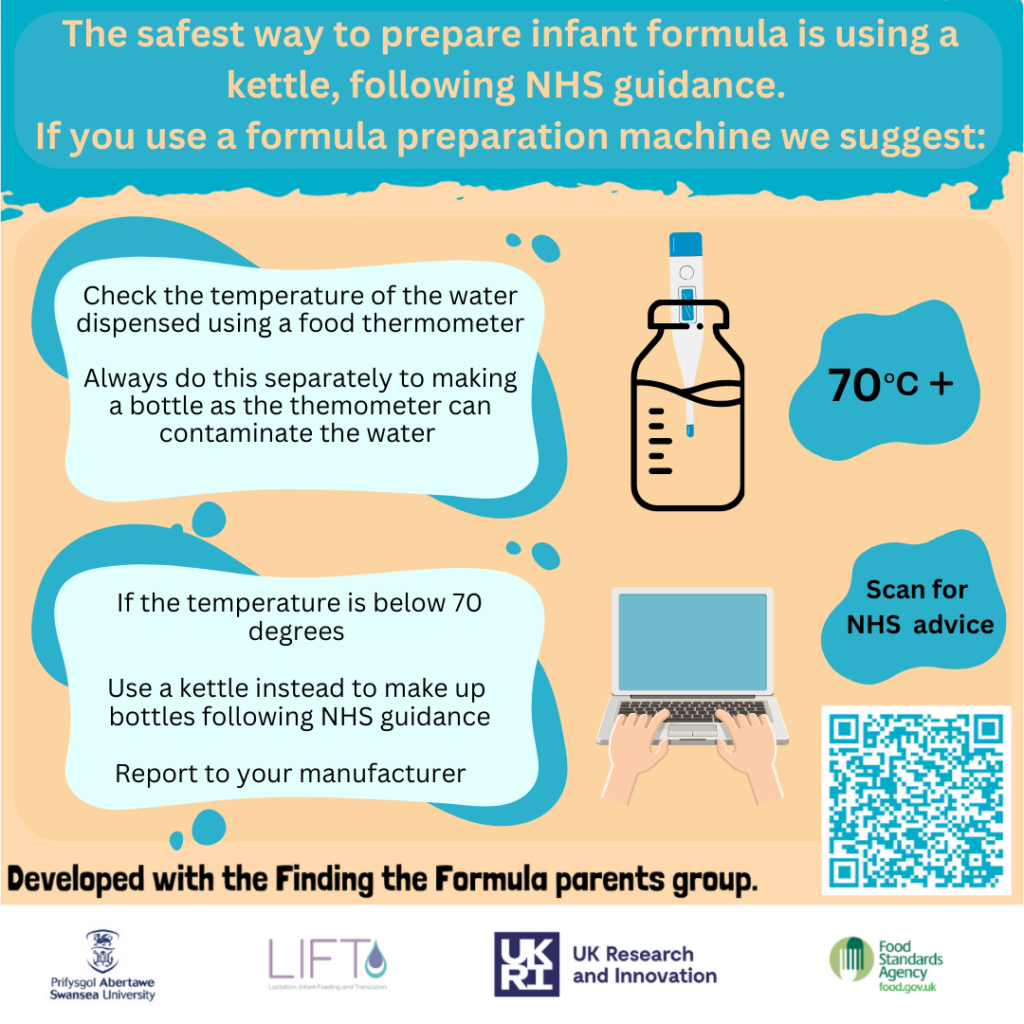If you decide to formula feed your baby, we are here to support you. The following information will help you to do so as safely as possible and will help you and your baby to form a close and loving relationship.
Your Midwife, Health Visitor and Family Nurse should always be the first point of contact and support if you are experiencing any feeding issues. Don’t hesitate to ask for help, your Midwife, Health Visitor and Family Nurse are all trained to the very high standards of Unicef UK Baby Friendly and are there to support you with where you are in your feeding journey.
Responsive bottle feeding
It is best for just you and your partner to feed baby in the early weeks. This will help baby to feel safe and secure, get used to your way of feeding and enable you to form a close loving bond with your baby.
- Offer feeds when your baby shows early signals of being hungry. If your baby is upset, try to soothe her before you offer a feed. Skin contact is great for calming babies at any time
- Hold baby close to you, in a slightly upright position and look into baby’s eyes and talk gently to her. This will help calm and reassure her
- Gently rub the teat above baby’s top lip to encourage her to open her mouth and poke her tongue out. Place the teat into front of baby’s mouth allowing her to draw it further in
- Allow just enough milk to cover teat and pace the feed to meet baby’s needs, gently removing it if baby appears to want a break
- Offer frequent breaks throughout the feed sitting baby upright to help bring up her wind
- Never force baby to take a whole feed as she will know when she has had enough
- Discard any left over milk
This information is also available as a video: How to make up formula feed on Vimeo and How to bottle feed on Vimeo and a leaflet Formula feeding
First Steps Nutrition offers unbiased, up to date and evidence based information on formula milks. They also have a range of resources which are free to access and download.
The Parentclub website Formula feeding | Parent Club has lots of information to support formula feeding, including how to make up formula feeds and how to sterilise your feeding equipment.
The safest way to make up formula feeds is to use a kettle. If you have formula preparation machine, the following information will help to ensure feeds are made up safely.

First Steps Nutritionopens a new window offers unbiased, up to date and evidence based information on formula milks. They also have a range of resources which are free to access and download.















